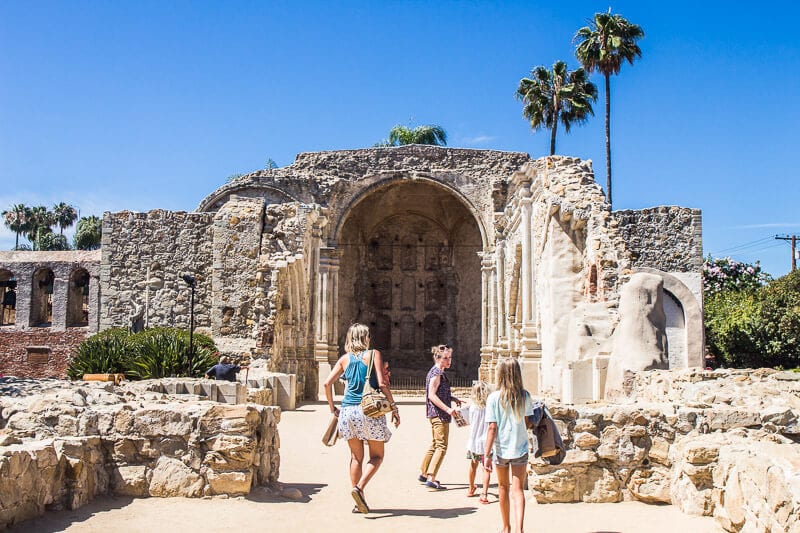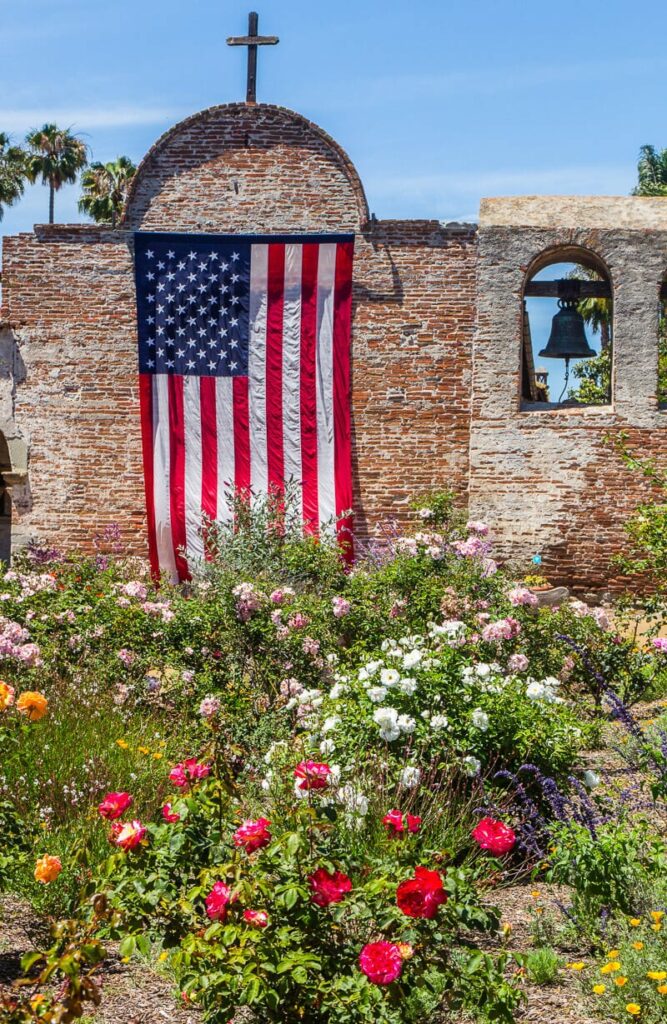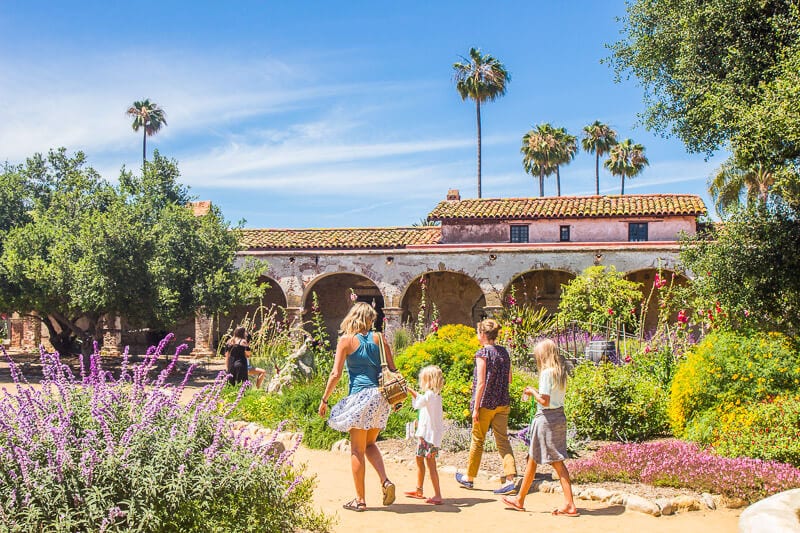When it comes to historical landmarks in Southern California, there is none more fascinating than the Mission San Juan Capistrano in Orange County.
This former Spanish colonial mission is considered the birthplace of Orange County and is known for its 200-year-old architecture and stunning chapel.
But what exactly is the San Juan Capistrano Mission? In this guide, we’ll tell you everything you need to know, from its history to what you can see and do there.
What is San Juan Capistrano Mission famous for?

But first, what exactly is the Mission San Juan Capistrano? To cut a long story short, the San Juan Capistrano is a mission that was built by Spanish Catholics in the late 1700s.
If you’re not entirely clued up on your history, a mission is defined as a commune of missionaries, or military personnel, who formed settlements known as missions during the reign of the Spanish Empire.
In the days between 1769 and 1833, there were 21 Spanish missions created across the state of California. They were used primarily as a way to preach the Catholic belief to locals and to expand the empire.
Mission San Juan Capistrano, was one of the oldest.
History of San Juan Capistrano Mission

Mission San Juan Capistrano was founded in 1776 and was the 7th mission out of 21 to be built in the state. It was named after Saint John of Capistrano, and the church that features a Spanish-Baroque style still stands today.
It was founded by Junipero Serra and was built to increase the territories of the Spanish missionaries who wanted to preach Christianity to the indigenous people across California.
But Mission San Juan Capistrano was not just a place for the Spanish to preach their gospel, they also taught agriculture and farming techniques, as well as introduced new clothing, technology, and ways of doing things.
If the indigenous people, known as Acjachemen, wanted to join the Catholic faith, then they could be baptized and join the Mission.
But this meant they had to change everything about their way of life, including their language, work, culture, food, and even their daily routine.
The Spanish brought horses, mules, ox, and sheep, but they also upset the indigenous plants and animals.
Because they bought many plants and animals over from Europe, these new species upset the balance, and largely influenced the landscape that we see of California today, from the shapes of the hills to the barren dry desserts.
The change in landscape also meant that many indigenous…
Click Here to Read the Full Original Article at y Travel Blog…
